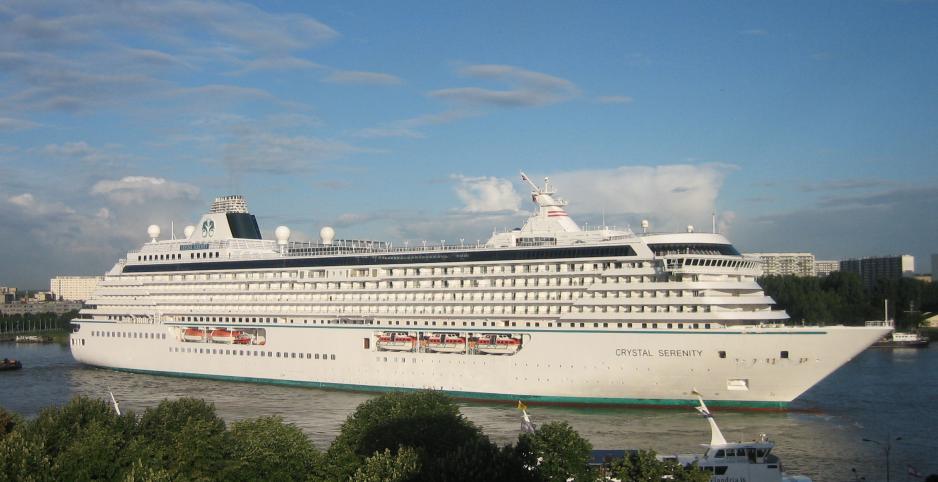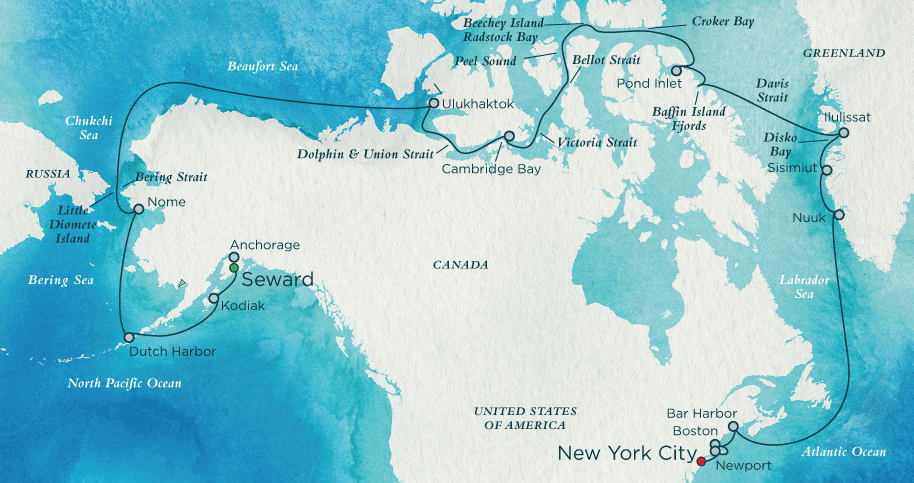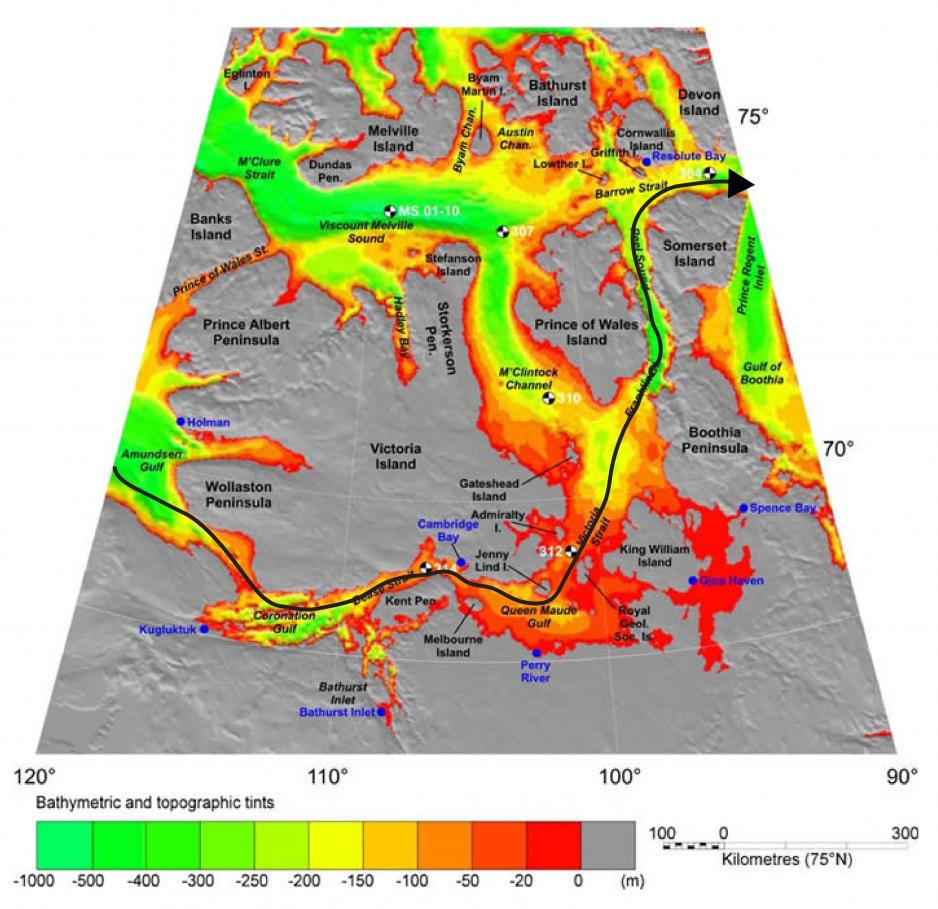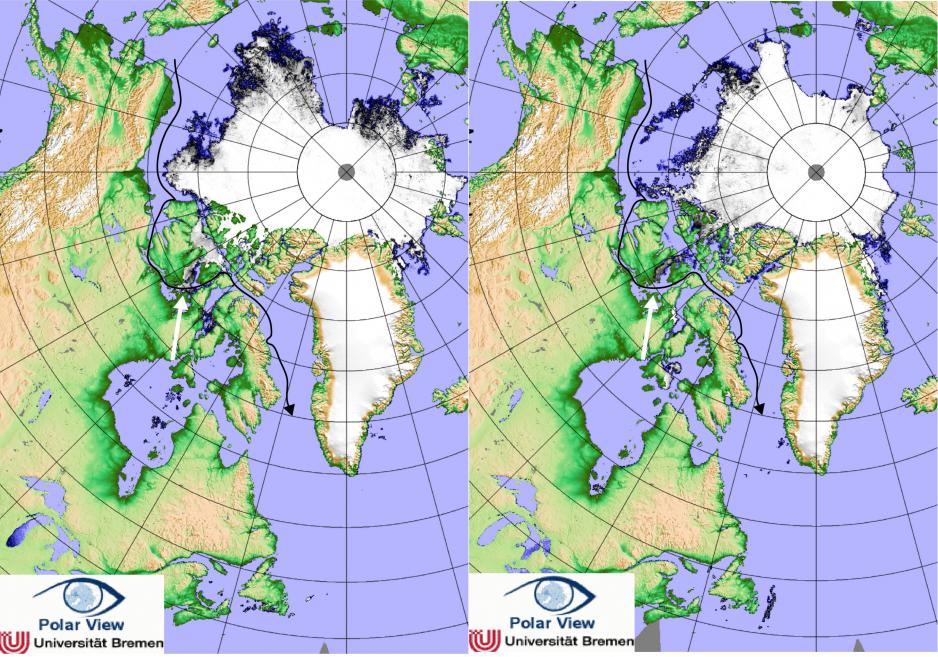First Large Cruise Ship to Transit North-West Passage this Summer

The first large cruise ship, Crystal Cruises’ Crystal Serenity, carrying up to 1,800 people, is scheduled to transit the Northwest Passage (NWP) from the Pacific to the Atlantic in August 2016.
The first large cruise ship, Crystal Cruises’ Crystal Serenity, carrying up to 1,800 people, is scheduled to transit the Northwest Passage (NWP) from the Pacific to the Atlantic in August 2016. With recordlow ice extent this past winter, the operator is hoping for favorable ice conditions this summer along the Arctic sea route.
Giant of the Sea Ventures into the Arctic Ocean
The Crystal Serenity, a 259meter luxury cruise ship without any iceclassification, will depart from Seward, Alaska on August 16th, and is scheduled to arrive in New York City a month later on September 16th. It will be the largest cruise ship to traverse the route by a significant margin, with previous vessels carrying fewer than 250 passengers.
Along the route the vessel – and its 1070 passengers and 655 crew – will call at ports at least 13 times, including three stops along the NWP.
The vessel’s itinerary calls for stops at the communities of Ulukhaktok, Northwest Territories (NWT) on August 27th, Cambridge Bay, on August 29th, and Pond Inlet on September 5th. Bringing nearly 2,000 people into the High Arctic results in the peculiar situation that the ship’s “population” will exceed those of many of the communities it will visit.
Both Cambridge Bay and Pond Inlet have a population of around 1,600 residents according to estimates from the Nunavut Bureau of Statistics in 2014. In order to reduce the impact, passengers will leave the ship in smaller groups according to Crystal Cruises.
Careful Planning to Increase Safety Margins
The operator has been working closely with the United States and Canadian Coast Guards, Transport Canada and Alaskan State officials to carefully plan the route and to adequately prepare for the challenges a voyage through the Arctic’s dangerous waters entails.In March 2016 Crystal Cruise and authorities conducted a tabletop exercise to review and test the prepared emergency response plans, according to Maritime Executive.
The particularity of navigating in iceinfested waters led the operator to implement a host of safety measures. An icecapable escort vessel carrying oilspill response equipment and a helicopter in part used for ice reconnaissance, will accompany the Crystal Serenity through the High Arctic portion of its journey. In addition, both vessels will carry experienced ice pilots to ensure a 24 hour presence on the bridge, according to Crystal Cruises.

Navigating the Dangerous Waters of the NWP
The dangers of navigating the NWP have been experienced by many of the explorers venturing into its hostile environment, including Norwegian polar explorer Roald Amundsen who completed the first successful navigation of the route during a threeyear expedition from 19031906. With the decline of ice extent over the past decade the route has becoming increasingly navigable and it was declared “icefree” for the first time since satellite observations began in 1978 for a few days in the late summer of 2007.
Despite more favorable ice conditions the risks for a safe passage remain substantial as the Clipper Adventurer, a 100meter ice capable cruise ship, found out in 2010 when it struck an underwater obstacle just over three meters below the surface near Kugluktuk in Coronation Gulf while carrying around 200 passengers. Fortunately, seas were calm at the time and passengers and the crew were evacuated safely with the assistance of a Canadian Coast Guard ice breaker.
The waters along the NWP, while generally deeper than the waters along the Northern Sea Route, exhibit a number of choke points with shallower waters. Especially throughout Coronation and Queen Maude Gulf, both along the planned route of the Crystal Serenity, water depth ranges from 020 meters. With a draft of 8 meters, the vessel will require a depth of at least 10 meters to safely navigate.

Ice Conditions Will be Key to Successful Voyage
Despite record warming in the Arctic over the past decade and recordlow ice extent in January, February and March of 2016, a key unknown will be the prevailing ice conditions during the month of August. The operator describes the route as flexible and states it will abide by Canadian Coast Guard recommendations. It also includes “spare” days to allow for potential detours.
The chosen route is prone to ice floes which tend to linger in the channels between the islands of the Canadian archipelago. And while on the Northern Sea Route along the Russian coastline dangerous hardened multiyear ice has become uncommon, the Canadian archipelago remains a nursery for multiyear ice, which tends to survive the summer months in the far reaches of Canada and Greenland.
A comparison of ice conditions along the route at the end of August 2014 and 2015 illustrates the high seasonal variability. While the route was largely ice free in 2015, a substantial amount of ice was present in the Victoria Strait during the same time in 2014.

A Sign of Things to Come?
The Crystal Serenity’s voyage will serve as a harbinger of economic activity to come. While Crystal Cruises has proposed a full range of measures to safely navigate these waters – surely in part paid for by ticket prices ranging from US$21,855 to more than US$120,000 per person – it remains to be seen if standards for safety and environmental stewardship remain at this high level.
As ticket prices are likely to decline in the future and previouslyexclusive voyages become more common, it’ll be easy to forget that while navigating Arctic waters there is little if any margin for error.
More of our stories in english here

